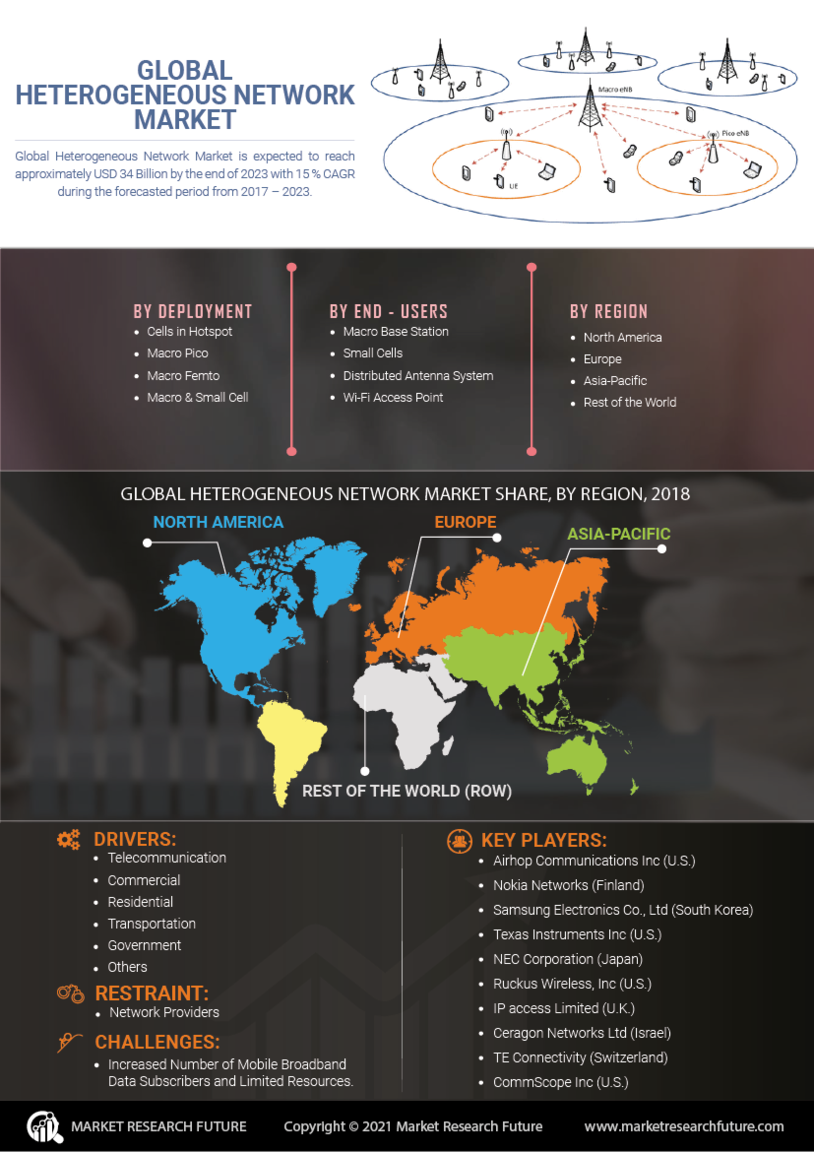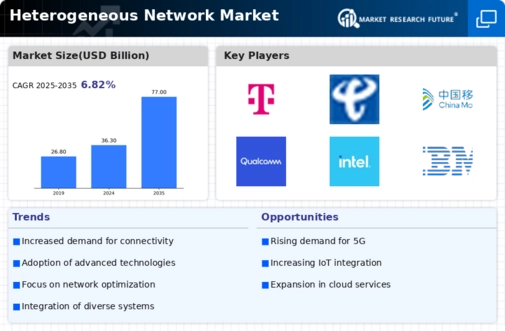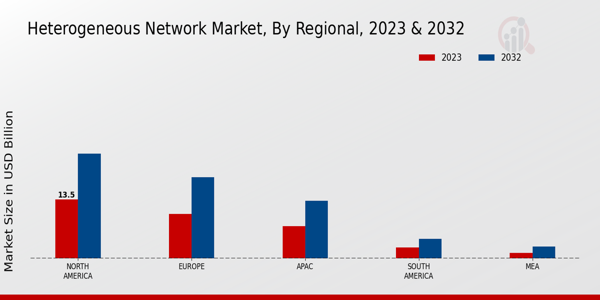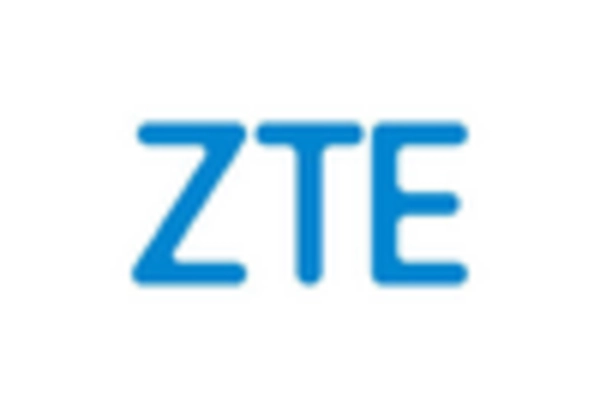Growing Focus on Network Security
As cyber threats become more sophisticated, the Heterogeneous Network Market is witnessing a heightened focus on network security. Organizations are increasingly aware of the vulnerabilities associated with diverse network environments, prompting investments in advanced security measures. The Heterogeneous Network is projected to exceed 300 billion by 2025, indicating a strong correlation with the need for secure heterogeneous networks. This trend compels network providers to integrate security protocols and solutions that can safeguard data across various platforms and devices. Consequently, the Heterogeneous Network Market is likely to evolve, incorporating security as a fundamental component of network design and implementation.
Emergence of IoT and Smart Devices
The proliferation of Internet of Things (IoT) devices is a key driver in the Heterogeneous Network Market. With billions of devices expected to be connected by 2025, the need for efficient and reliable network architectures becomes increasingly critical. IoT applications, ranging from smart homes to industrial automation, require heterogeneous networks that can support diverse communication protocols and data traffic types. Market data indicates that the number of connected IoT devices is anticipated to reach 30 billion by 2025, further emphasizing the necessity for adaptable network solutions. This growth presents opportunities for the Heterogeneous Network Market to innovate and develop systems that can effectively manage the complexities associated with IoT connectivity.
Regulatory Compliance and Standards
The Heterogeneous Network Market is influenced by the need for compliance with various regulatory standards. Governments and regulatory bodies are increasingly establishing guidelines to ensure the security and reliability of network infrastructures. Compliance with these regulations is essential for service providers and enterprises to avoid penalties and maintain customer trust. As a result, the demand for heterogeneous networks that can adapt to changing regulatory requirements is on the rise. Market data suggests that adherence to compliance standards can enhance operational efficiency and reduce risks, thereby driving growth within the Heterogeneous Network Market. This trend underscores the importance of developing flexible network solutions that can accommodate evolving regulatory landscapes.
Increased Demand for High-Speed Connectivity
The Heterogeneous Network Market is experiencing a surge in demand for high-speed connectivity, driven by the proliferation of data-intensive applications. As organizations and consumers increasingly rely on cloud computing, streaming services, and real-time data analytics, the need for robust network infrastructure becomes paramount. According to recent data, the demand for high-speed internet connections is projected to grow at a compound annual growth rate of over 15% in the coming years. This trend necessitates the integration of various network technologies, including 5G, Wi-Fi 6, and fiber optics, to ensure seamless connectivity. Consequently, the Heterogeneous Network Market is poised for significant expansion as service providers and enterprises invest in advanced networking solutions to meet these evolving demands.
Advancements in Artificial Intelligence and Machine Learning
The integration of artificial intelligence (AI) and machine learning (ML) technologies is transforming the Heterogeneous Network Market. These technologies enable more efficient network management, predictive maintenance, and enhanced user experiences. AI and ML can analyze vast amounts of data in real-time, allowing for dynamic adjustments to network configurations based on traffic patterns and user behavior. This capability is particularly valuable in heterogeneous environments where multiple technologies coexist. Market forecasts indicate that the AI in the telecommunications sector is expected to grow significantly, potentially reaching 20 billion by 2025. This growth suggests that the Heterogeneous Network Market will increasingly leverage AI and ML to optimize performance and improve service delivery.


















Leave a Comment